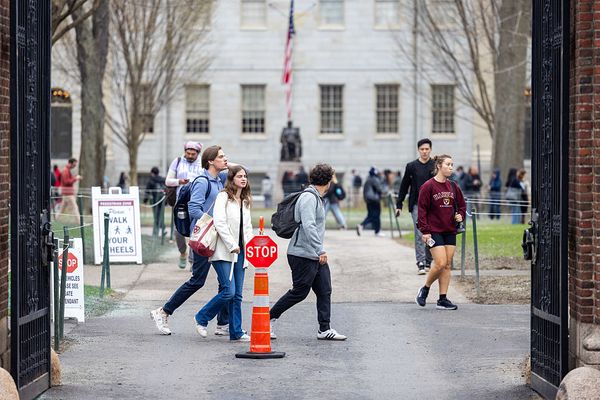
Why should the people of Birmingham have 100% arts cuts imposed on them? Brummies are quite capable of devaluing their own art without official encouragement. In 2020, the director Michael Cumming and I completed King Rocker (“One of my all time favourite rock docs” – Mark Kermode; “the new gold standard for rockumentaries” – the Scotsman), which interwove the tale of typically self-effacing Birmingham post-punks the Nightingales with that of a giant piece of neglected Birmingham public art. Nicholas Monro’s King Kong, an 18ft-high fibreglass ape, was a ferocious presence in a brutalist sunken square in Birmingham, subtly mirroring his namesake’s annoyance with the art deco architecture of 30s New York. In the King Kong movie, beauty killed the beast. But the giant ape I loved as a child was murdered by Birmingham. Twice.
Hated by 1970s regional-news-television talking-head Brummies and sold into nomadic slavery by the ignorant city fathers only months after it was unveiled in 1972, the stupendous ape was eventually rediscovered in 2016, and critically rehabilitated, by Leeds’s Henry Moore Institute. Like all great Birmingham geniuses, Kong had to go elsewhere to get recognised. But for many Brummies, Birmingham’s fear of getting above itself is one of the region’s most endearing traits. The alternative, of course, is being Manchester, the city equivalent of an endlessly farting dog that expects nauseated passersby to applaud.
Indeed, it’s Birmingham week here at the Observer, but the Midlander’s innate modesty means it’s rarely even Birmingham week in Birmingham itself. The humble Brummie would eschew Birmingham week and insist they should have given the week to Kidderminster instead because it has a nice carpet museum. And even if it was Birmingham week, Brummies would say it was a waste of money and the cash spent on the massive inflatable Joan Armatrading should have been put towards rebuilding something astonishing that until recently they all hated and said should have been knocked down anyway.
Abandoned in Lichfield in 1968 and raised in Shirley on the city of Birmingham’s fringes from 1969 onwards, I spent my childhood in the landscape of Steven Knight’s new This Town drama, from Philip Larkin’s cut-price Coventry in the east to Noddy Holder’s faggot-fed Wolverhampton in the west. The series echoes the original and best Brummie TV drama, Philip Martin’s Gangsters. Like all the best Birmingham art, it is forgotten.
Gangsters graced BBC One from 1976 to 1978, grafted spaghetti western tropes on to Birmingham’s multicultural backstreets, featured a spooky prog theme by Greenslade and showed Martin himself, dictating his script to a typist. No one thought anyone from Birmingham could be as brilliant as Martin clearly was, so Gangsters was assumed to be a mistake caused by Bovril and was buried, briefly available again in 2006 on a DVD label that has since gone bust. Of course.
It’s hard making Birmingham-based art. But, after our critically acclaimed King Rocker raised the King Kong statue’s profile, a replica was commissioned from Monro in 2022 and placed in Birmingham’s Jewellery Quarter. When we visited it, Cumming posed cooperatively for a selfie with a fan who mistook the director for Lawrence from art pop pioneers Felt, another Brummie artist in exile, recently memorialised in marble by Corin Johnson in London’s Fitzrovia Chapel, typically unacknowledged in the city that spawned him.
But Lawrence, and Monro’s King Kong, both feature in Benny’s Babbies, a collage by Birmingham’s Cold War Steve, showing the many culturally significant figures the region has produced, which hangs enormously in the city’s art gallery. I am there in my capacity as “the world’s greatest living standup” (the Times), standing next to Robert Lloyd from the Nightingales, and yet, typically, he and I are the only two Midlands icons in the work not to be identified in the chart placed beneath it, a fact that amused my children greatly when I conceitedly took them to see it.
Some Birmingham art is not neglected. The giant bull statue that featured in the Birmingham Commonwealth Games in 2022 now has a permanent home in New Street station, but that bull is lucky. Birmingham’s first fibreglass bulls – Trewin Copplestone’s iconic 1963 quartet of tectonic silhouettes, Bull Forms – were simply lost when the Bull Ring shopping centre they adorned for four decades was redesigned in 2000. Each sculpture weighed nine tonnes. Perhaps Adrian Chiles has made them into a massive home urinal.
Birmingham’s relationship with its cultural history remains complicated, partly because the world beyond Birmingham finds Birmingham inherently funny. I am under no illusions that one reason the documentary I narrated for Radio 4 last year, The Balsall Heath Bohemians, which celebrated the Birmingham surrealists, gained traction was precisely because no one would expect Birmingham to be in at the birth of a globally significant art movement. In fact, put the word “Birmingham” in front of anything and it’s weird. Birmingham cheese. You wouldn’t offer it to a lady. Why?
Birmingham’s cultural significance is a well-kept secret and perhaps that’s best. An underrated female Birmingham pre-Raphaelite awaits recalibration. Somewhere in a church in a village in a forest south-west of Birmingham, a beautiful freestanding screen she painted lies unguarded in a dusty corner. I will not name the woman. I will not name the church. Secrecy is best. Birmingham’s beauty has a habit of being destroyed.
Prove me wrong. In a piece of Birmingham brilliance, the recast statue of Monro’s King Kong was last seen, in July last year, in pieces at Garvey’s scrapyard in Telford, but now it’s gone. Garvey has no record of what happened to the statue and it was unable to confirm whether it was sold in pieces to be reassembled, or just for scrap. To lose an important artwork once might be forgivable. To lose it twice looks like carelessness. On balance, Birmingham can go fuck itself.
King Rocker is newly available to stream. Stewart Lee vs the Man-Wulf opens in London in December before a national tour







